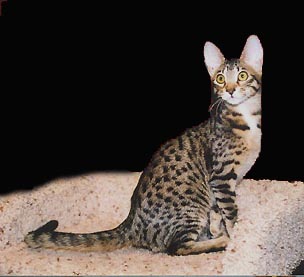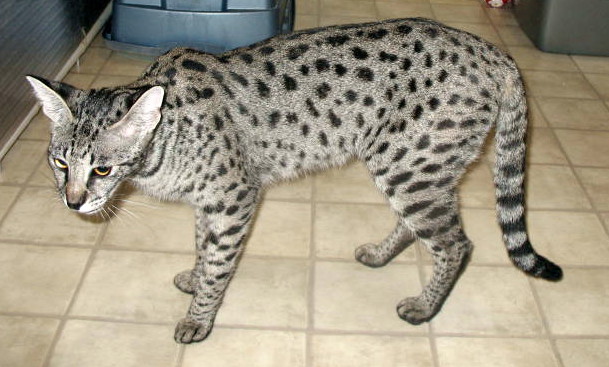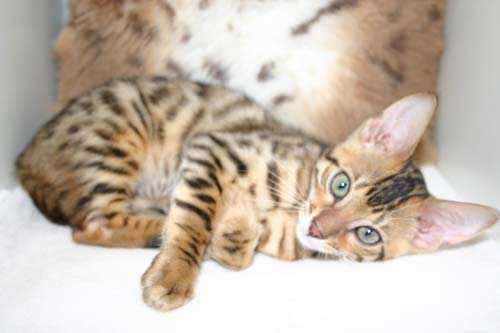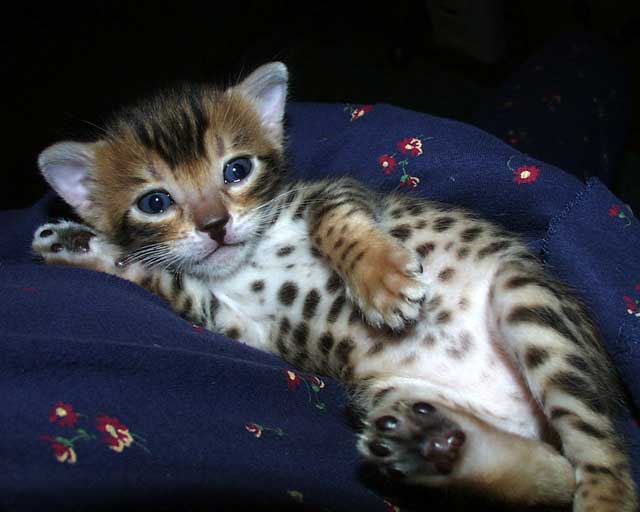



|
Serengeti Description
A long-legged beauty, the Serengeti has a regal bearing reminiscent of the stone statues found in ancient Egypt. The head is a modified wedge that begins with the nose and ends at the tips of the ears. The ears are wide and deep. They are large in size, strikingly so, and should be equal to the head of the cat in length. Eyes are round and large, and separated by a broad nose; color should be gold or yellow with hazel to light green allowed. The body of the Serengeti is solid, with long legs ending in medium sized, oval feet. This is a long and lean cat with medium boning.
The coat of the Serengeti should be short and even, fine in texture with some loft and density. The coat is allowed in the following colors: brown spotted tabby, solid black, silver spotted tabby, and black smoke. No other colors are permitted.
Serengeti Temperament
The Serengeti is an open and friendly cat. Though prone to shyness when first introduced to new people, this breed opens up quickly and easily. They love to be with their people and are true velcro cats, preferring to be at your side no matter what you do. These are active and agile cats who love to run around the house and get into everything they can. Highly vocal, they will talk to you constantly about everything that catches their attention. They get along with pets and children when introduced appropriately.
Serengeti Care
The Serengeti has few grooming needs and no special nutritional requirements. When purchasing from a breeder, be sure to inquire about any genetic or hereditary diseases or disorders and have your kitten examined by a vet prior to purchase.
Serengeti History
A creation of conservation biologist Karen Sausman, the Serengeti was created to be a purely domestic version of the African serval cat. Unlike the Savannah, the Serengeti has no wild blood and is a hybrid of the domestic oriental shorthair and the Bengal. The breeding project was started in 1995 and the breed is now popular enough to be in production throughout the United States, the United Kingdom, Europe, Australia and Russia. They have been accepted by TICA and are in the preliminary new breed category.
|